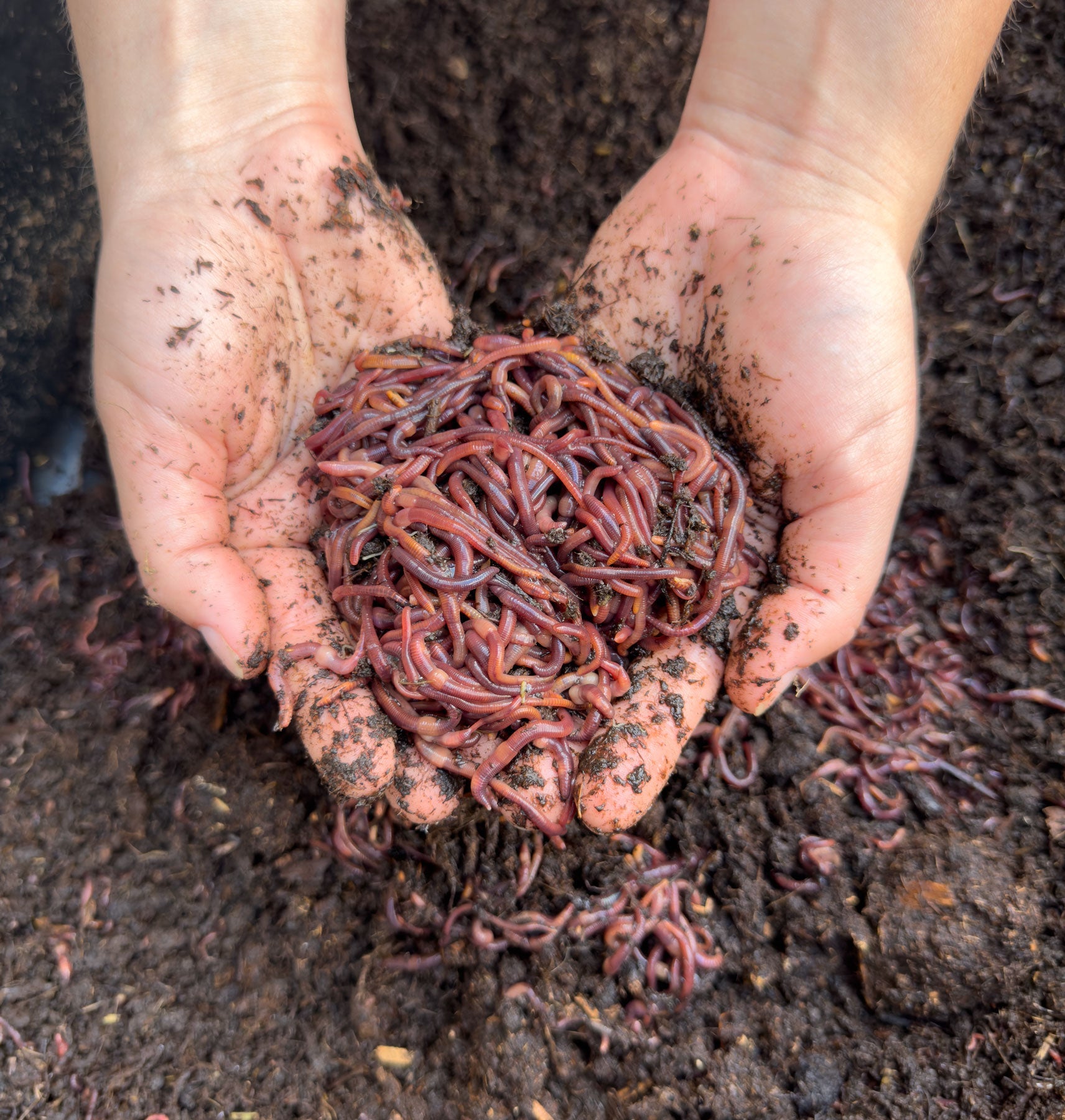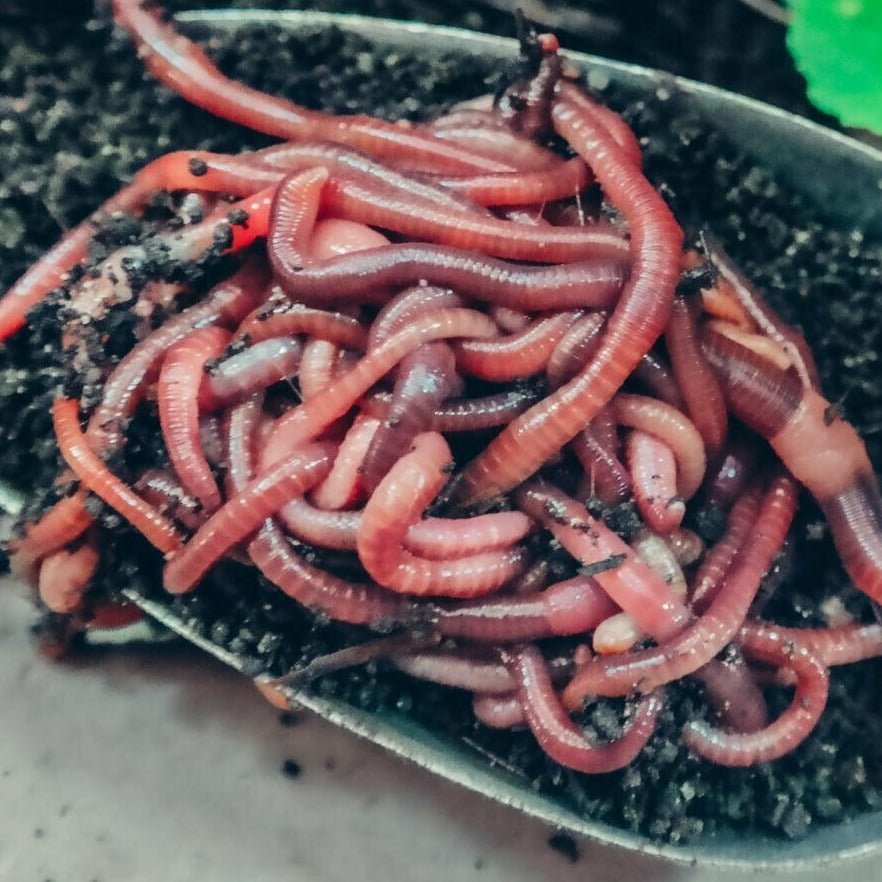Discover Why Lake Hickory Bait is the Best Choice for Yard Care
Discover Why Lake Hickory Bait is the Best Choice for Yard Care
Blog Article
Red Wigglers: The Unsung Heroes of Organic Waste Recycling
Red wigglers, or Eisenia fetida, work as critical agents in the organic waste recycling process, transforming discarded materials into important vermicompost. Their effective break down of organic matter not only enhances soil quality but also adds to lasting waste monitoring techniques. As the globe progressively seeks services to fight waste buildup and enhance agricultural productivity, understanding the role of these worms becomes essential. What mechanisms permit them to prosper in compost environments, and how can they be properly made use of in both household and business settings? Exploring these inquiries discloses the wider implications of vermicomposting in our ecological landscape.
What Are Red Wigglers?
The impressive durability of red wigglers, medically called Eisenia fetida, underscores their vital role in natural waste recycling. These small, reddish-brown earthworms are commonly found in decaying organic issue, such as compost heap and manure heaps. Lake Hickory Bait. Unlike other earthworm varieties, red wigglers flourish in nutrient-rich settings and are highly effective at damaging down organic products, making them crucial for vermicomposting

(Red Wiggler Express)Along with their role in waste reduction, red wigglers contribute to soil wellness by boosting dirt structure and aeration through their tunneling tasks (Lake Hickory Bait). Their visibility in composting systems not just boosts decomposition rates however likewise advertises a lasting strategy to waste management, showing their value in environmental preservation initiatives
Advantages of Composting With Worms
Composting with worms, especially red wigglers, uses countless benefits that boost both waste monitoring and dirt wellness. These worms successfully damage down natural waste, converting it into nutrient-rich vermicompost that enriches dirt. This procedure speeds up decay, enabling for a much faster recycling of kitchen area scraps and other organic products compared to conventional composting approaches.
In addition, the vermicompost generated by red wigglers is including helpful microbes, which assist improve soil framework, aeration, and dampness retention. This boosts the general health of plants, advertising energetic growth and increased returns in gardens and agricultural setups. The usage of worms in composting lessens the production of greenhouse gases, such as methane, adding to a much more lasting waste administration system.

How to Begin Vermicomposting
Developing a vermicomposting system is an uncomplicated process that can yield significant benefits for both waste administration and dirt enrichment. To start, pick an ideal container, such as a plastic container or wood box, with adequate air flow openings to make certain proper airflow. The dimensions should ideally be around 2 feet by 3 feet, allowing ample space for the worms to flourish.
Next, prepare bedding material, which can include shredded paper, cardboard, or coconut coir. This bed linens needs to be dampened to develop an appropriate environment for the worms. When the bed linen is in location, introduce red wigglers (Eisenia fetida) into the container, typically around one extra pound of worms for every single square foot of surface.
Complying with the placement of worms, include organic waste, such as fruit and vegetable scraps, coffee premises, and crushed eggshells. With these steps, you will efficiently launch a vermicomposting system that adds to sustainable waste monitoring and enhances your soil.
Keeping a Healthy Worm Container
(Lake Rhodhiss Bait)Keeping a worm container flourishing requires routine focus and like ensure the health and wellness of the red wigglers and the efficiency of the composting procedure. Proper maintenance starts with checking the moisture degrees; the container ought to perspire however not saturated. A good guideline is to maintain a consistency comparable to a wrung-out sponge.
Gently mixing the bed linen and food scraps every few weeks stops compaction and makes certain that all worms have access to oxygen. Additionally, it is crucial to feed the worms suitably.
Temperature level regulation is another important element. Red wigglers prosper in a series of 55 to 77 levels Fahrenheit. If the container comes to be also warm or cool, the worms might become stressed - Lake Hickory Bait. Regularly inspect for indications of health and wellness, such as worm populace growth and the existence of healthy castings. By diligently managing these factors, one can maintain a durable and effective worm container.
Influence On Lasting Living
The effective maintenance of a worm container not just benefits the health of red wigglers yet additionally contributes considerably to sustainable living techniques. By recycling organic waste, such as cooking area scraps and lawn debris, red wigglers aid draw away substantial quantities of product from landfills. This decrease in waste not only decreases greenhouse gas exhausts but additionally lessens the environmental worry linked with waste administration.
Moreover, the spreadings produced by red wigglers work as a nutrient-rich organic plant food, improving dirt health and wellness and advertising plant growth. This all-natural option to chemical plant foods supports lasting agriculture and horticulture practices, lowering reliance on artificial inputs that can harm environments. Additionally, worm composting cultivates awareness of waste monitoring, encouraging people and areas to embrace even more sustainable practices.

Final Thought
In recap, red wigglers work as vital contributors to organic waste recycling through their effective decay of organic materials. Their capability to create nutrient-rich vermicompost improves dirt health and wellness and sustains lasting agricultural methods. By integrating vermicomposting into waste administration methods, individuals and neighborhoods can substantially minimize waste while promoting environmental sustainability. The role of Eisenia fetida in fostering healthy ecological communities emphasizes the relevance of these microorganisms in attaining sustainable living and improving soil fertility.
Report this page